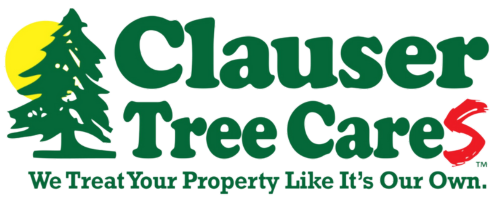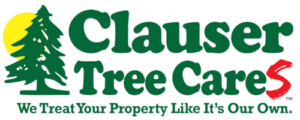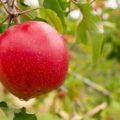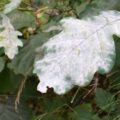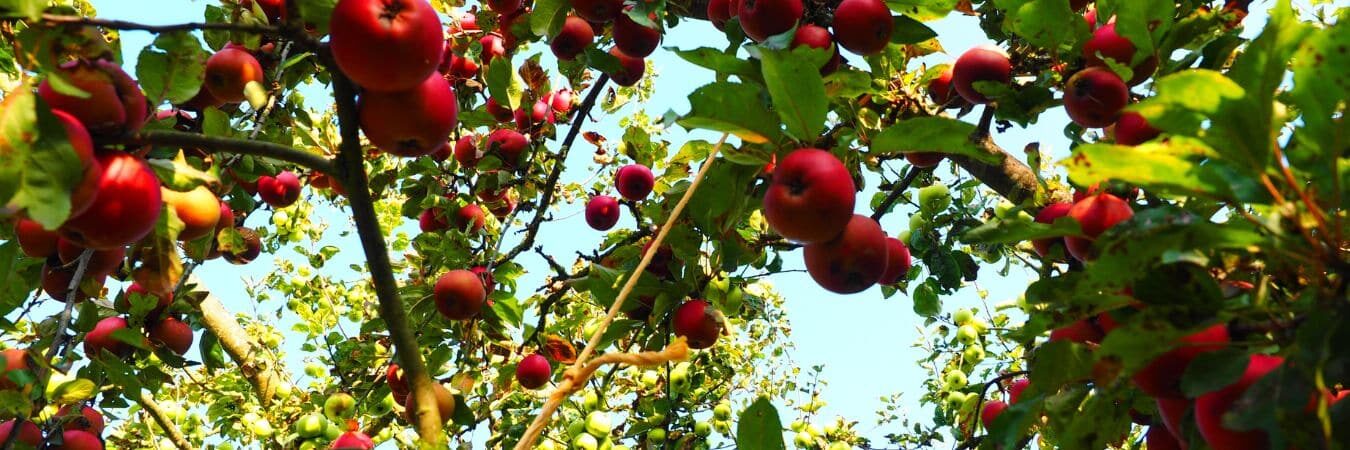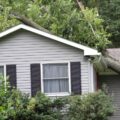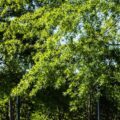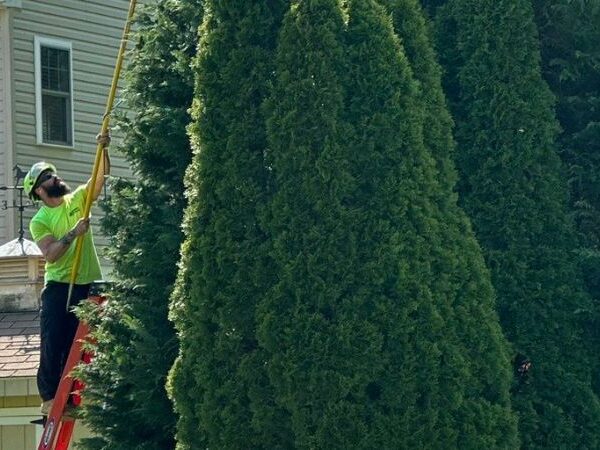Brown, burnt-looking tree leaves are never a welcome sight in Pennsylvania and can often make you wonder if you’ve done something wrong. You might ask yourself, “Did I water my trees properly?” or “Did I apply too much fertilizer?”
While scorched tree leaves can indicate conditions like water stress and over-fertilization, there could be something else to blame. We’re talking about BLS or Bacterial Leaf Scorch, an illness caused by the Xylella fastidiosa bacteria. Bacterial leaf scorch on pin oaks and red oaks is widespread and severe here in eastern Pennsylvania.
Sometimes referred to as “marginal leaf burn,” bacterial leaf scorch is a tree and plant disease that can affect many different species, and the topic invites a host of questions like:
- What is bacterial leaf scorch?
- How is bacterial leaf scorch spread?
- How do you prevent bacterial leaf scorch?
- Can bacterial leaf scorch be cured?
- Which of my trees are at risk from bacterial leaf scorch?
Let’s dive into these topics and more.

Trees infected with bacterial leaf scorch show brown edges with a distinctive yellow line separating the scorched-looking parts from the healthy green tissue on the leaf’s interior.
Bacterial Leaf Scorch – What It Looks Like
Bacterial leaf scorch is a tree disease, with brown, scorched leaves being the main symptom. This symptom develops when the marginal leaf cells (those on the edges of the leaves) lack sufficient water.
Infected tree leaves look scorched around the edges of the leaf with some remaining healthy tissue inside. A significant distinction between bacterial leaf scorch and other causes of scorched leaves is the distinct yellow line of tissue between the scorched edges and the green interior.
Bacterial leaf scorch begins when the Xylella bacteria multiply in the xylem, the water-transport tissue of the tree. As the bacteria grow in number, they reduce the volume of water transported to the leaves. This results in the “scorched” appearance.
Emergence of BLS Symptoms
Symptoms of infection usually show up in mid‐to‐late summer when you may notice affected leaves curling up and dropping prematurely. As the infection progresses over several years, branches die and the tree declines, eventually to the point where removal is necessary. Depending on the particular tree and/or its environment, decline may occur quickly or slowly.
How Bacterial Leaf Scorch Spreads
You’re probably wondering how a tree gets infected with bacterial leaf scorch. The culprits for the spread of the disease are several sucking insects in the Katydid family, namely:
- Spittlebugs
- Leafhoppers
- Treehoppers
All three of these insects feed on the sap of many different tree species. By themselves, these insects pose little threat to the health of the trees. However, when one of these insects feeds on an infected tree, they carry away some Xylella bacteria in their mouthparts. Then, when these insects feed on a new tree, they pass on the bacteria and spread BLS to healthy trees.

Leafhoppers are one of the sap-sucking insects that carry the Xylella bacteria and can spread BLS to healthy trees. Image courtesy of Susan Ellis, Bugwood.org.
Pennsylvania Trees Are at Risk from Bacterial Leaf Scorch
Unfortunately, BLS affects many tree species throughout Pennsylvania and the rest of the United States. In eastern Pennsylvania, the trees most commonly infected with the Xylella bacteria are red oaks and pin oaks. However, these other species can also be infected:
- Oaks
- Elms
- Sycamores
- Mulberries
- Red maples
- Sycamores
- Sweetgums
This isn’t an exhaustive list of trees that can be infected with BLS. If you have trees on your property, chances are they are susceptible to bacterial leaf scorch.
There is No Cure for BLS But …
The bad news is there isn’t a cure for BLS. The bacteria are so widespread that even removing infected trees can’t prevent the spread to other trees. This, and the fact that flying insects spread the disease, means attempting to eradicate the condition through removal is impossible.
However, that doesn’t necessarily mean an infected tree is done for.
… Infected Trees CAN Be Treated
The only effective management strategy for this disease involves an annual truck injection of the antibiotic tetracycline.
It takes several years for Xylella fastidiosa to kill trees, and tetracycline treatments can help your trees stay healthy for longer, even after infection. This treatment will significantly reduce the symptoms of bacterial leaf scorch, but only temporarily (for about a year), and does not cure the tree of the disease.
As the tetracycline breaks down, symptoms will reappear, so it’s necessary to repeat the treatment every year. While tetracycline is not a cure, it’s the only treatment shown to alleviate the symptoms of bacterial leaf scorch.
To combat the aesthetic effects of bacterial leaf scorch, you can prune away the affected leaves to give the tree a healthier appearance.
If you attempt to prune away parts of your BLS infected tree, sanitize your pruning tools with bleach after each cut, or you risk spreading BLS to healthy parts of your tree.
How to Prevent Bacterial Leaf Scorch
Though there is no cure for bacterial leaf scorch, prevention is possible with proper pest management and cultural practices. These methods can’t guarantee a tree won’t become infected. Still, they can lower the chance of your trees becoming victims of the Xylella bacteria.
Keep Trees Healthy
Stressed trees are more prone to illness. Keep your trees healthy by watering correctly and providing all the required nutrients. Many soils, particularly those in suburban areas, lack the nutrients trees need.
Since proper nutrition is essential for healthy trees, a deep-root fertilization treatment can help replenish the soil with the necessary nutrients.
Remove Infected Trees
Removing infected trees near healthy trees is an effective method to slow or stop the spread of BLS locally. Early removal of an infected tree reduces the chance other nearby trees will be infected.
Plant BLS-Resistant Trees
Planting trees resistant to bacterial leaf scorch is a great way to prevent infection in the first place. More resistant tree species means fewer opportunities for infection by Xylella-carrying insects. It also means these trees won’t serve as bacterial hosts to carry on the disease when new insects come to feed.
Here are some tree species believed to be resistant to bacterial leaf scorch:
- Black tupelo or black gum
- Beech
- Buckeye
- American linden
- Japanese zelkova
Plant a Mix of Trees to Prevent Bacterial Leaf Scorch
A mix of plant and tree types will ensure a healthy ecosystem of resistant plant life and beneficial insects that will help keep BLS-carrying insect populations down.
Plant and tree diversity will also attract new bird species to the area. Many of these birds are insect eaters – that includes insects carrying BLS.
Save Your Trees from Bacterial Leaf Scorch
Though the symptoms of bacterial leaf scorch are distinctive, they are very similar to other afflictions that could affect your trees. This makes it challenging to know which actions you should take.
While we know that BLS is prevalent in Montgomery and Bucks Counties, you don’t have to face it alone. A certified arborist can confirm the presence of the Xylella bacteria and begin an annual treatment regimen to save your valuable trees.
If it’s determined your trees aren’t infected with BLS, an arborist can still assess them and recommend the best course of action to keep them healthy and looking their best.
If you are having a problem with bacterial leaf scorch, call us today at 215-542-8291.
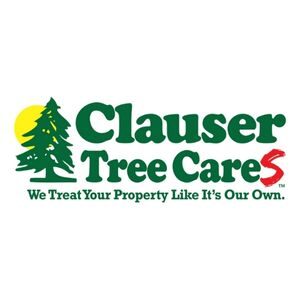
About Clauser Tree Care
From who you talk to on the phone in our office, to our courteous and experienced work crews who provide your service, all of the hard-working team members at Clauser Tree Care strive for complete client satisfaction. Our job is simply not done until you are pleased with the experience that you have had working with our company. Founded more than 25 years ago on the principles of honest work and arboricultural best practices, we strive for a higher standard of care for a greener future.
